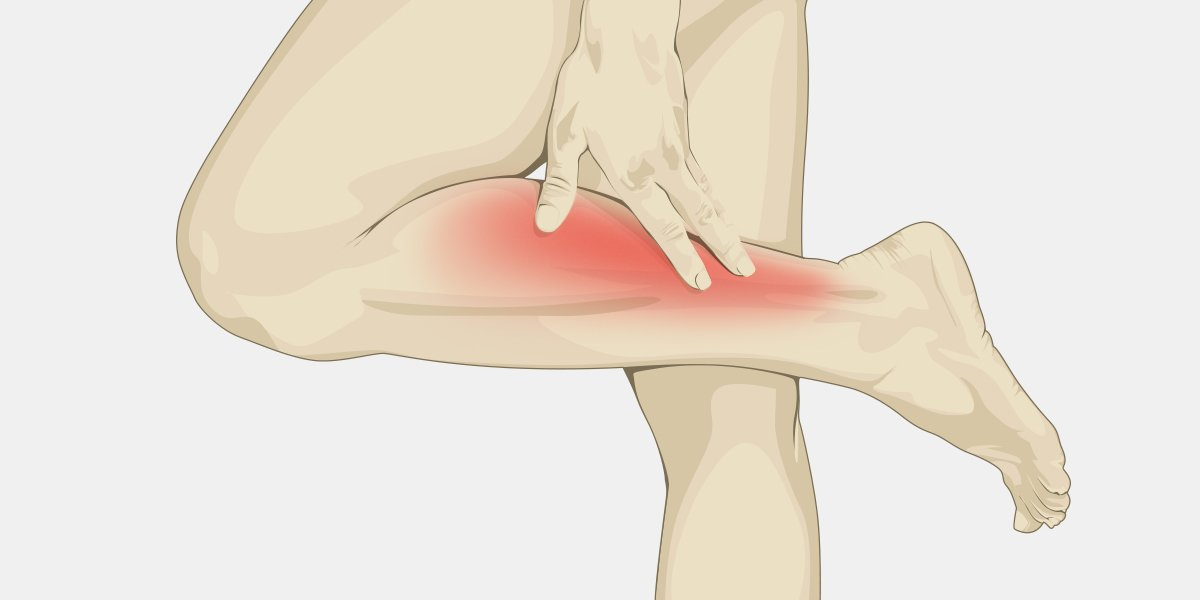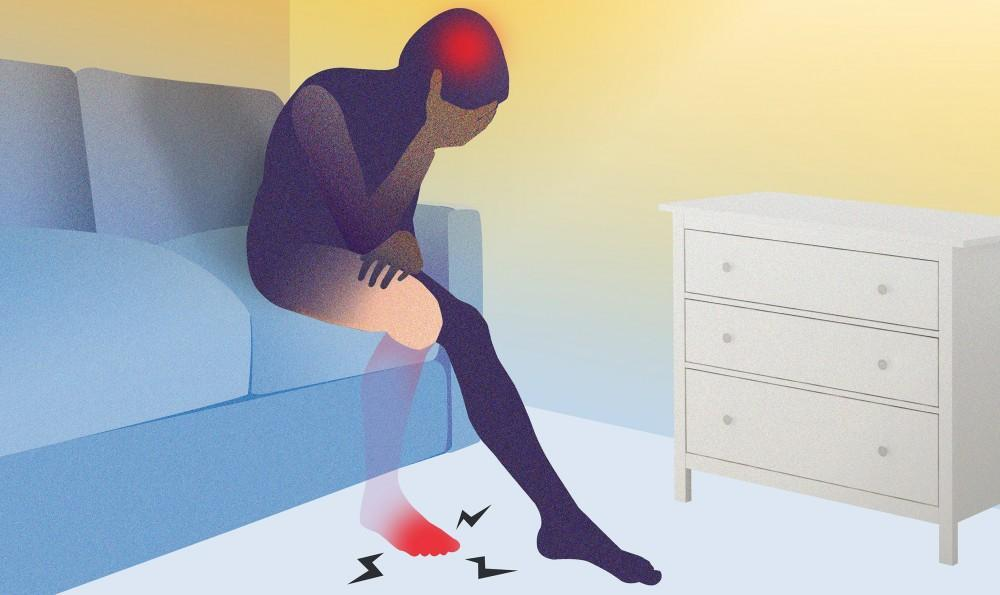Mitigate Pain Clinic – Dr Jeshnu Tople – Pain Management Specialist In Nagpur
Limb Pain
Limb Pain Treatment


What Is Limb Pain?
Limb pain refers to discomfort, soreness, or aching in any part of the arms or legs. It can range from mild to severe and may be caused by a variety of factors, including injuries, nerve damage, or circulatory issues. The pain may occur in one limb or affect multiple limbs simultaneously.
Common types of limb pain include:
Arm Pain: Often due to musculoskeletal conditions like tendinitis or nerve compression.
Leg Pain: Commonly associated with injuries, arthritis, or vascular conditions.
Hand and Foot Pain: May result from repetitive stress, nerve damage or inflammatory conditions.
Regardless of the cause, limb pain can significantly impact daily life, making it essential to seek specialized care from experts like those at Mitigate Pain Clinic.
Causes of Limb Pain
Limb pain can stem from various causes, each requiring a specific treatment approach. Common causes include:
Nerve Damage: Conditions like peripheral neuropathy or sciatica can lead to sharp, radiating pain in the limbs.
Musculoskeletal Conditions: Arthritis, tendinitis, and bursitis are frequent causes of chronic limb pain.
Circulatory Issues: Peripheral artery disease (PAD) and blood clots can cause leg pain due to poor blood flow.
Traumatic Injuries: Fractures, sprains, and muscle strains are common sources of acute limb pain.
Understanding the underlying cause is crucial to developing an effective treatment plan.
Acute vs. Chronic Limb Pain
Limb pain can be classified as either acute or chronic, depending on its duration and severity.
Acute Limb Pain: This is short-term pain that occurs suddenly, often due to injury or surgery. It typically resolves as the injury heals.
Chronic Limb Pain: Lasting for months or even years, chronic limb pain may result from conditions like arthritis, nerve damage, or vascular diseases. This type of pain can be more challenging to manage and often requires specialized treatments.
Chronic limb pain can lead to secondary complications such as muscle atrophy, limited mobility and reduced quality of life. At Mitigate Pain Clinic, we focus on providing long-term relief through a combination of treatment designed to address chronic pain effectively.


Diagnosing Limb Pain
Accurate diagnosis is the first step toward effective treatment. At Mitigate Pain Clinic, we use a comprehensive diagnostic approach to determine the cause of limb pain. This includes:
Physical Examination and Medical History: Our pain specialist assesses the affected limb, evaluates symptoms and reviews the patient’s medical history to identify potential causes.
Imaging Tests: X-rays, MRI and CT scans help visualize bone and soft tissue damage, while ultrasound may be used to evaluate blood flow.
Nerve Conduction Studies: These tests measure how well nerves are functioning and can help identify nerve-related causes of limb pain.
Blood Tests: In some cases, blood tests are used to detect underlying conditions like infections or autoimmune diseases that may contribute to limb pain.
By using a multidisciplinary approach, we ensure that each patient receives a personalized diagnosis, leading to the most effective treatment plan.
Role of Medications in Limb Pain Management
Medications can be an important part of managing limb pain, especially in the short term or when combined with other treatments. At Mitigate Pain Clinic, we develop personalized medication plans based on each patient’s condition and needs.
Common medications used for limb pain include:
Anti-Inflammatory Drugs: To control inflammation and swelling in injured tissues.
Neuropathic Pain Medications: Drugs like gabapentin or pregabalin may be prescribed for nerve-related pain.
We carefully monitor medication use to ensure effectiveness and minimize side effects.
Interventional Pain Management for Limb Pain
Interventional pain management focuses on minimally invasive techniques to relieve pain by targeting the specific structures involved. This approach offers an alternative to conventional treatments like medication and surgery, providing more effective and longer-lasting relief for limb pain. At Mitigate Pain Clinic, we specialize in the following interventional pain management treatments:
● Nerve Blocks for Limb Pain Relief
● Sympathetic Nerve Blocks
● Radiofrequency Ablation (RFA) for Limb Pain
● Spinal Cord Stimulation for Chronic Limb Pain
Our pain specialists at Mitigate Pain Clinic carefully assess which interventional treatment is the right option for each patient and provide ongoing support for device management.
Physical Therapy and Rehabilitation for Limb Pain
Physical therapy plays a crucial role in limb pain management by restoring mobility, strength, and function.
Key components of physical therapy for limb pain include:
Range-of-Motion Exercises: To improve flexibility and prevent stiffness.
Strengthening Exercises: To build muscle and support the affected limb.
Functional Training: Helping patients regain the ability to perform everyday activities.
Rehabilitation is essential for both recovery and preventing future pain episodes.
Lifestyle Modifications to Manage Limb Pain
In addition to medical treatments, lifestyle changes can play a key role in managing limb pain. At Mitigate Pain Clinic, we emphasize the importance of:
Dietary Changes: Maintaining a healthy weight can reduce pressure on joints and alleviate pain.
Regular Exercise: Low-impact activities like swimming or walking can improve mobility and reduce stiffness.
Stress Management: Techniques like meditation or yoga can help patients manage the emotional toll of chronic pain.
These lifestyle modifications, combined with medical interventions, provide a holistic approach to limb pain management.
Preventing Limb Pain Recurrence
Preventing future episodes of limb pain is a key goal of treatment at Mitigate Pain Clinic. Strategies for preventing pain recurrence include:
Injury Prevention: Proper warm-ups, stretching, and ergonomic adjustments can reduce the risk of injury.
Posture and Ergonomics: Maintaining good posture and using proper body mechanics can prevent musculoskeletal strain.
By addressing both the immediate pain and its underlying causes, we help patients avoid future pain flare-ups.
Why Choose Mitigate Pain Clinic for Limb Pain Treatment?
FAQs about Limb Pain
Our Treatments
- Joint Pain
- Back Pain
- Sciatica Pain
- Neck Pain
- Hand Pain
- Shoulder Pain
- Foot & Ankle Pain
- Limb Pain
- CRPS Pain
- Cancer Pain
- Headache
- Hyperhidrosis
- Herpes Zoster Pain
- Chronic Pelvic Pain
- Scar Tenderness
- Postherpetic Neuralgia
- Trigeminal Neuralgia
- Peripheral Neuralgia
- Chronic Vascular Pain
- Generalised Body Pain
- Chronic Injury Pain
- Failed Back Surgery Syndrome
- Chronic Post Surgical Pain
- Other Painful Conditions
- Slipped DISC / PIVD